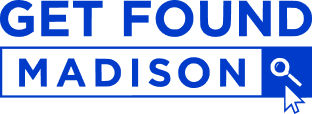Business owners often ask us what SEO entails. Despite the still-common belief, good SEO doesn’t consist of “manipulating” Google’s algorithm. To the contrary, ranking on the first page for your services is more a matter of following online marketing best practices and adhering to search engine guidelines and capitalizing on what we actually know about how Google works.
To rank well, you need:
- Keyword Research to anticipate how people search for your services
- Onsite Optimization built onto your website so Google and Bing start to associate those keywords with you
- Speed and Mobility so your website loads fast and works well on mobile devices
- Accurate business listing citations on the web’s top directories and data aggregators
- Lots of great reviews on your Google My Business listing
- Great, keyword-rich content posted regularly on your site
- Links from other sites showing you are trusted, authoritative, and valuable
Easy, right? Well, not exactly, but it at least helps to know what we’re up against when we want to be in the “modern phonebook” on page 1 of Google and Bing. The following describes how we break this all down in our recommended 6-month SEO projects.
Phases of our SEO campaigns
Phase 1 – Onboarding, Site Assessment, Strategy Development
Before we begin helping our clients rank, we have a 60-90 minute meeting to discuss goals, metrics, customer demographics, competitors, how we’ll track new customer leads and the upcoming SEO campaign. We also collect logins for the website backend and any other web tools.
Then we do our overall assessment of the site’s SEO and create a report. This includes
- keywords to target
- estimated search volumes
- current rankings and traffic
- current incorrect, missing or duplicate citations
- recommended optimizations for the website, Google My Business, Facebook, Yelp, and LinkedIn pages
- assessment of overall campaign difficulty
- Full list of top 5 competitor backlinks
Recommended Content Creation Strategy
At the end of this phase, we provide our client with a report of where they’re at and what we need to do to get them where they want to be.
Phase 2 – Onsite Optimization
Once we have planned a client’s overall SEO strategy, the next step is to optimize the website and the web pages they control (like Google My Business, Yelp, Facebook, LinkedIn). During this stage, we make sure the website and all landing pages are properly optimized for search engines.
In addition, we ensure there is a relevant and properly optimized landing page on the website for each targeted keyword phrase, meaning a separate web page for each service offered. Note how onsite optimization can mean tweaks to existing web pages and creation of new ones. Site structure is important, and so are the details within the pages of that site structure.
We also help clients optimize for conversions, which goes beyond basic SEO. We care what customers do once they get to the site and we want to measure how effective the website is at using calls to action. As such, we help clients make sure visitors to their webpages know exactly what action to take. Examples include:
-
- Call Now
- Schedule an appointment
- Set up a free consult
- Fill out the Contact form
We share our checklist with the client so they can see the progress we’re making on the tasks. We also report monthly on all key metrics we’re measuring.
Phase 3 – Off-Site Optimization, Citation Submission & Clean up
Once a client’s website and social web pages are optimized, it is time to work on their off-site internet presence so search engines gather correct and authoritative information. Business information such as name, address and phone number (NAP) need to be absolutely consistent across the web’s four main aggregators and all pertinent business directory sites. We check line by line in each of the aggregators and major directories for duplicates, incorrect, and missing citations–then we correct them. This is crucial for brick and mortar businesses and not something most business owners know to do, let alone how to do it.
The end of phase 3 is also a good time to start looking ahead to link building and seeing if there are any easy links we could acquire without too much work.
Content Strategy
Don’t you hate when your dental hygienist reminds you of your responsibilities to brush, floss and use a water pick regularly? Well, for some business owners this is that part: we tell our clients they need to create and post relevant content regularly, ideally a 500+ word post once a month. (For others, before-and-after photos or videos may be more appropriate.) That frequency and amount of content creation is a tall order for some, so sometimes we need to scale it back to biweekly or even once a month. But to make the search engines re-crawl and index a site on a regular basis, that site needs consistent, regular updates. Blog posts allow more space to include target keywords as well.
Our clients obviously know their industries better than we do, but we can brainstorm the overall Content Strategy and specific post ideas, interview them to generate material, edit blogs posts, and provide ongoing feedback and encouragement.
Phase 4 – Ongoing & Advanced SEO: Link Building, Tracking, Updates
The first three phases lay a solid foundation on which to build a website’s authority with the search engines. At this point, keywords should now be placed strategically throughout the site’s HTML and the business listings should be correct. Once the search engines take stock of these two sets of changes, we usually start to see some improvement in rankings.
To keep the momentum going, it is essential our client continue posting and promoting fresh content on a regular basis and for us to monitor and fine-tune the SEO strategy each month.
Because links from other websites are so important and link-building and outreach is frankly difficult, we assist in identifying other high authority and niche websites from which to build links to our client’s sites. The SEO long game is to continually post new content and build up inbound link equity month after month, year after year. That’s how a business ascends to those coveted top 3 spots on page 1 of Google.
What results can you expect?
So what kind of results can a business expect after all this work?
That really depends on how competitive their target keywords are. In general, in the towns outside of Madison like Middleton, Fitchburg, Monona, Verona, Waunakee, Stoughton, Verona, etc., it’s doable to rank on page 1 if not the top half of page 1 in around six months.
Madison, as you can imagine, is more competitive, so sometimes it takes closer to a year or more to make it onto page one (that’s why we offer to stay on as your SEO experts via monthly retainer after the initial campaign).
That said, if you’re actively working on SEO when your competitors aren’t, you are sure to have a leg up. From the analysis we’ve done of different industries around town, few Madison-area businesses are pursuing SEO on an ongoing basis right now, so this is a huge opportunity.
Here’s how we usually ballpark the SEO competitiveness of a local industry
Low competition:
- the third-place listing has < 5 Google or Yelp reviews or under 10 backlinks from other websites
- You could start ranking in ~ the top 5 spots in 3-4 months, especially if you have more reviews and post weekly content
Medium competition:
- the third-place listing has < 10 Google or Yelp reviews and about 10-20 backlinks
- You could start ranking in ~ the top 5 spots in 6 months,especially if you have more reviews and post weekly content
High competition:
- the third-place listing has >10 Google or Yelp reviews and > 20 backlinks
- Expect to invest in SEO for a year or more to rank in the top 5
We don’t guarantee any specific rankings (like the #1 spot on page one) for our clients, but we expect to see some measured improvement over the course of the campaign. SEO takes time and is a long-term investment; it takes a while for Google and Bing to re-crawl, index and eventually boost a business over its competitors.
Also note how SEO is a collaborative effort; we tell our clients they can’t expect our SEO expert to disappear for a month and resurface to show improved search rankings and web traffic. The SEO specialist can handle the overall strategy and certain details, but some SEO campaign tasks fall to the business owner, such as creating relevant content, and some website updates need to be made by a web developer.
Closing Thoughts
Is a 12-month SEO campaign a sizable investment in your long-term growth? Sure.
Does it take work? Definitely.
Is it worth it to get directly in front of customers who are ready to buy what you’re selling as soon as today? Absolutely.


